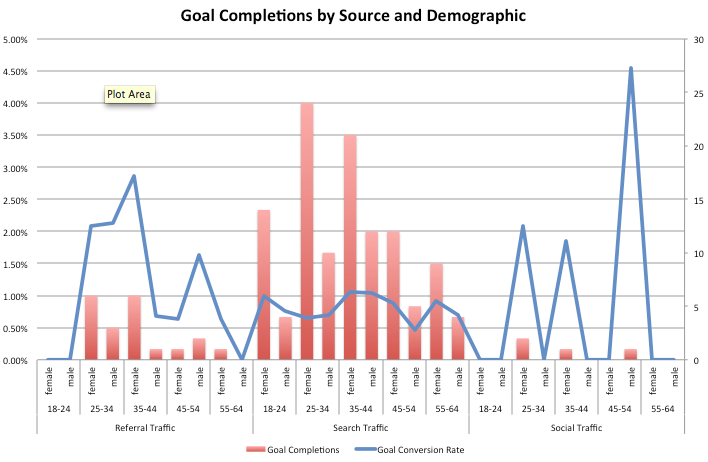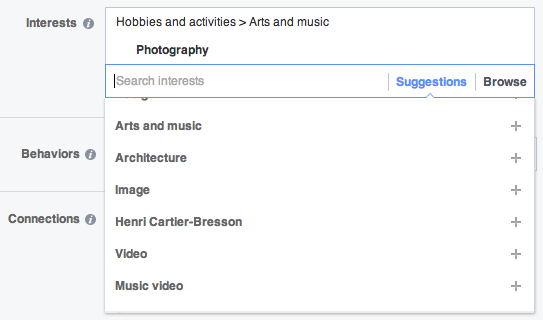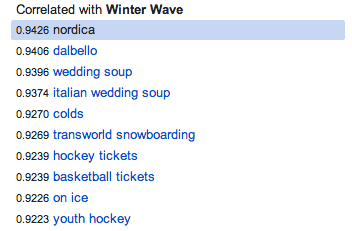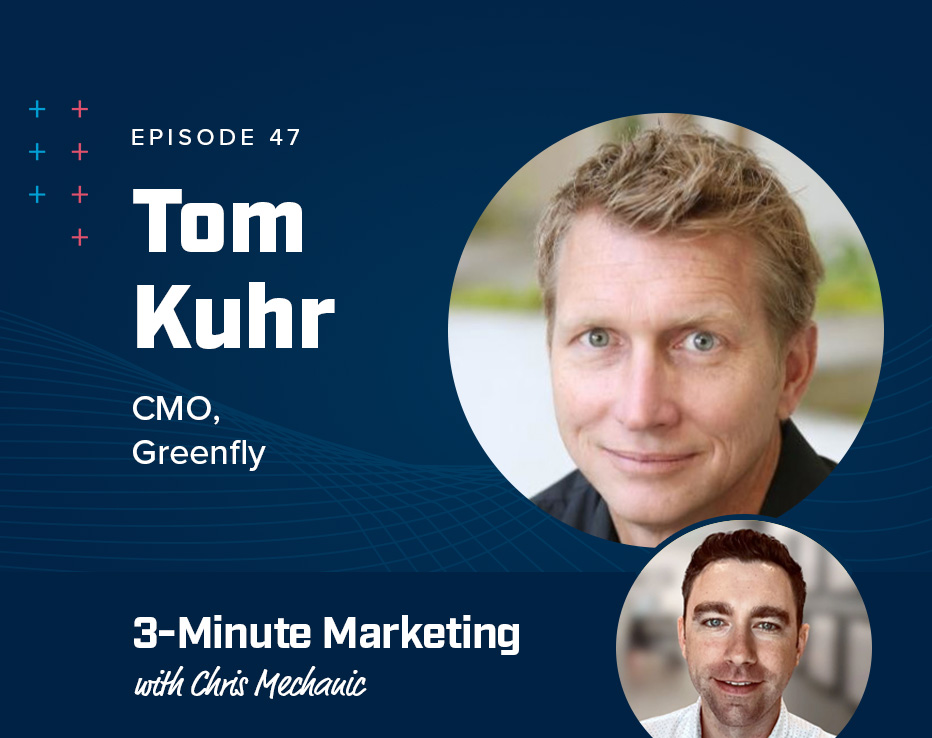
Personas & Buyer Awareness: Mapping the Customer Experience
Personas. Ah yes! Your ideal audience distilled down to a few friendly faces.

Marketers love building personas. They target entire campaigns around them. Sales teams love personas too. They help communicate key selling points without ever picking up a phone. Even your customer or client loves personas. They make his or her journey through your website far more efficient.
I won’t dispute any of the above. Personas are fantastic tools for fine tuning your company’s messaging and reaching the right audience. That’s why most of this post discusses how to create and map personas. The other part of the post, however, deals with the parts of persona development I don’t like — the bias, the bickering, and the wasted time.
Most pitfalls with persona development can avoided by working with somebody that has been down these paths and can sniff out danger. I included some warning signs in this post to do just that — keep your team productive and stop them from falling in love with their own creations.
How to create a persona.

Personas are stereotypes. They’re generalizations about your ideal audience. Things change though so you need to remain flexible. Define what you can and refine as data accumulates or direction changes.
You can use this template to create your personas. It’s basic and I like it that way — especially for small to medium sized organizations doing this for the first time.
There are plenty of other templates and methods you can use for creating personas. But most of that extra complexity (and money) won’t yield much — particularly if the project is abandoned before the benefit is ever realized.
The template and the tips below are a quick and dirty persona development method that’ll get you 90% of the way there.
Tip 1: Mind meld with your sales and marketing teams.
Sales and marketing is a potent pairing. Together, the two should have all the information you need to create accurate, usable personas.
The easiest way to get both teams harmoniously collaborating is by keeping them apart. You need to become a human ping pong ball, bouncing back and forth between the departments while absorbing their input. Here’s how you do that:
- Draft up your personas using the persona worksheet without any outside interference. Lock yourself in a dark room, all alone, and write by candlelight.
- Send a copy to each member of the sales team and each member of the marketing team. Ask each team member to add or subtract up to three things from each persona.
- Use their responses to revise your personas.
The danger to avoid here is people becoming overly invested in your personas. They end up providing useless layers of arbitrary detail (e.g. Tech-illiterate Terry has 3 Christian-named kids, broke her arm once at age 13, dislikes the crust that forms atop scotch pudding, is tired of her marriage and recently started talking to this suave marketer). That level of depth insanity obscures the useful information and is not helpful for how these personas will be used.
Bias is another looming issue at this stage. Your SEO strategist is probably pretty convinced organic prospects in the awareness stage are the guiding light. PPC person probably thinks paid prospects in the decision stage are the most economical. Your closer loves the easy wins.
Confirmation biases will often get the best of people. Everyone will model their personas around what they know. We want that insight, but we also want something accurate of the whole picture. Which takes us to the next tip.
Tip 2: Support inferences with customer experience data.

You knew we’d get here eventually. Some people start here. I think that’s a mistake. Data misleads just as easily as it gives insight. Especially when you’re searching for confirmation of a bias.
But, when data is used as support for the previous exercise… Well button my buttons! That’s some good stuff.
There are plenty of places to pull your data. You can use some of the suggestions listed below or something completely different. I definitely would not suggest using them all — data overload. The most important thing is that you’re using some external data to verify your assumptions.
Google Analytics: Looking Inwards
Google is a treasure trove of data when properly configured. Their new demographics reports are particularly insightful. Here are a few reports that are worth looking at:
- Behavior Flow

Where did they come from, where did you they go? Well, you can find visualized answers to these questions in Google Analytics Behavior Flow reports.
These reports take on even more power if you have some custom content groupings that you can apply to the reports.
- Conversions – Google Analytics Demographics Reports

We like people who complete our goals. They’re our kind of people. But, what kind of people are they? Mostly male? How old?
The previous exercise built the personas out based on individual experience. Now let’s verify that with some numbers. Export a report showing age with a secondary dimension of gender. Then include metrics for goal completions and goal conversion rate. You may want to play around with the data in Excel to make it more readily interpretable though.
- Traffic Sources – Google Analytics Demographics Reports

Alright, we’ve verified who’s already productive on the site. What parts of the web are they coming from?
This report will show you productive channels and break it down by age and gender. To create it, use the same Google Analytics report as the one previously. Only difference, you need to apply segments for each traffic type before exporting and rearranging in Excel.
Important note: You’re looking inwards at your own historical data with these reports. Personas are intended for future prospects. So if an important persona isn’t represented here, calm down. That just means you need to do a better job attracting them to your site.
Additionally, mirroring these reports (i.e. gaining insight into visitors that ARE NOT converting) is equally valuable. This is one of the reasons why I don’t like to start here. Identifying your primary goal and the direction moving forward will guide you to the right data.
Social Media Data: Look Outwards
Social media is a great way to find out what affinities your audience may have – interests related to your primary goal.
For example, you may be able to find some data supporting your belief that educators, who are your target market, are likely to care about green living or be homeowners.
Below are a few tools that will help you support suggested affinities and connect unknown ones.
- Facebook’s interests & categories search

Interest search is accessible through the Facebook ad creator. It’s found in the Audience section. Type in the interest and then pick through the suggestions. The suggestions will often be some off-the-wall affinities you may have not guessed.
- Reddit’s search feature

Reddit is a hub of online conversation. It’s also nicely categorized and (somewhat) searchable.
For this exercise, just type in the interest you’re applying to your persona and then be amazed by all the different subreddits talking about it. You’ll often be shocked at the groups that are talking the most about your search term.
Other Research Tools
- Google Correlate

Google Correlate can yield some very interesting insights. Simply plug in the characteristic or interest and find out a) when it’s popular, b) where it’s popular, and c) what other search terms correspond with its trends. You’ll probably discover some pretty interesting stuff.
- Google Display Planner

Google Display Planner lets you research a keyword, category, or site. It’ll spit back out a whole bunch of other websites, interests, and other useful information you can add to or compare with your personas.
- Amazon’s related purchases

An Amazon search can go a long way. It’ll reveal some actual purchasing habits with “Frequently Bought Together” and “Customers Who Bought This Item Also Bought” sections.
Tip 3: Get real-world feedback

Give your hypotheses a rest. We want real stuff from real people!
A quick tactic for solidifying personas is by surveying your existing customers. It’s a fast, accurate way for verifying whether you’re on the right track.
Here’s what you can do:
- Spend 30 minutes boiling your personas down to one sentence descriptions. Match each of your clients (or a sampling) with these personas.
- Draft an email to your clients (or sample) asking them to identify with one of the descriptions. A giveaway and form with the descriptions in a dropdown is a great way to improve your response rate.
- Compare the responses with your anticipated results.
Did the responses from your clients align with your expectations? Probably not perfectly. Review the results and tweak your personas. Keeping that one sentence persona field on all your forms is a great way to continuously generate persona data.
How to map personas and align with the buyer’s journey.
You’ve solidified your personas. Now, let’s match them to your content, along with the stage of the buying cycle your personas will be at.
The goal of this exercise is to make sure that there are no gaping potholes in the buyer’s journey. It should uncover these holes, allowing you to patch them and make the road smoother than ever.
Identify your buying stages.
Every sale has a lifecycle. Some lifecycles will take less than 24 hours to complete while others may take over a year.
The stages below are a good way to segment that lifecycle. Your business may have more buying stages depending on what you sell, but this is a good place to start.
Here is a template you can use for spelling these stages out for your own business.
- Awareness

Description: The prospect has knowledge that a problem or opportunity exists. Prospects in this stage often search in terms of symptoms for the problem or opportunity. The prospect is looking for neutral information to help identify the problem or opportunity.
Content types: Reports, ebooks, editorials, expert opinion, white papers, educational material.
Example: “Diarrhea every day for the past week… What’s happening to me?”
- Consideration

Description: Prospect is researching available approaches and methods for dealing with the problem or opportunity. They’re using industry terms to define the problem.
Content types: Comparisons, guides, live interactions with video
Example: “Ahhh! My diet of Chipotle and Bob Evans has wreaked havoc on my stomach. I need some healthy eating options.”
- Decision

Description: The prospect has a solution in mind, now they’re weighing their options. They’ll be using documentation, data, and endorsements to make a final decision.
Content types: Vendor comparisons, case studies, trials, product information.
Example: “I can start shopping at Whole Foods, Harris Teeter, or another grocery store. Harris Teeter has less organic food options but they have online ordering, are located near my house, and have the best prices.”
Inventory all of your content.

Never overlook existing content. Find out what you have so you can build on it.
Creating an inventory is pretty straightforward (and time-consuming). We have a post here explaining how we develop our inventories and ID content, but there are plenty of ways you can do it. It all depends on your goal.
The bottom line is that you need a list of all existing content — offline and online. That way you can map personas/buying stages and identify what content needs to be added or updated.
This spreadsheet should work for the purposes of mapping personas and buying stages.
Map and fill in gaps.

Now it’s time to pull it all together!
Start mapping personas and buyer stages to each piece of content you’ve inventoried. You can assign multiple personas/stages to each piece.
This exercise should also help you realize where your gaps are. You may find that the bulk of your site’s content is concerned with the Awareness & Decision stages. With virtually nothing on the Consideration stage, you may want to start building out content for queries involving that buying stage.
Similarly, if little to no content aligns with one or more of your personas, it may be time to create some. You can take the same topic (e.g. healthy eating options) and create several pieces of content on it for your personas (e.g. healthy eating options for mom buyers versus healthy eating options for bachelors).
This won’t be easy and partly why I like to make the persona development process as fast as possible.
Focus on the results, not the process.
Mapping your customers’ experience is an excellent use of your time. Your content strategy gains clarity, data analysis becomes faster, and the end user benefits.
I want to urge you not to become overly fixated on the process, however. Personas and buyer stages are easy ways to symbolize complex processes. They’re approximations of your ideal audience and their desired actions. They’ll never encompass 100% of the types and ways a lead lands in your CRM.
The most important thing to do is concentrate on ways to increasing lead generation effectiveness. Hopefully this exercise promotes that goal. If you find that personas are actually impeding your team’s progress by over-complicating things, it’s okay to drop it in favor of a simpler process that actually contributes to lead generation.
Resources
- Ian Lurie’s post about growing your audience with random affinities
- Timothy Gillman’s post on Google Analytics Demographics Reports
- Julie Spatola of HubSpot’s eBook on mapping the buyer’s journey
Most newsletters suck...
So while we technically have to call this a daily newsletter so people know what it is, it's anything but.
You won't find any 'industry standards' or 'guru best practices' here - only the real stuff that actually moves the needle.






